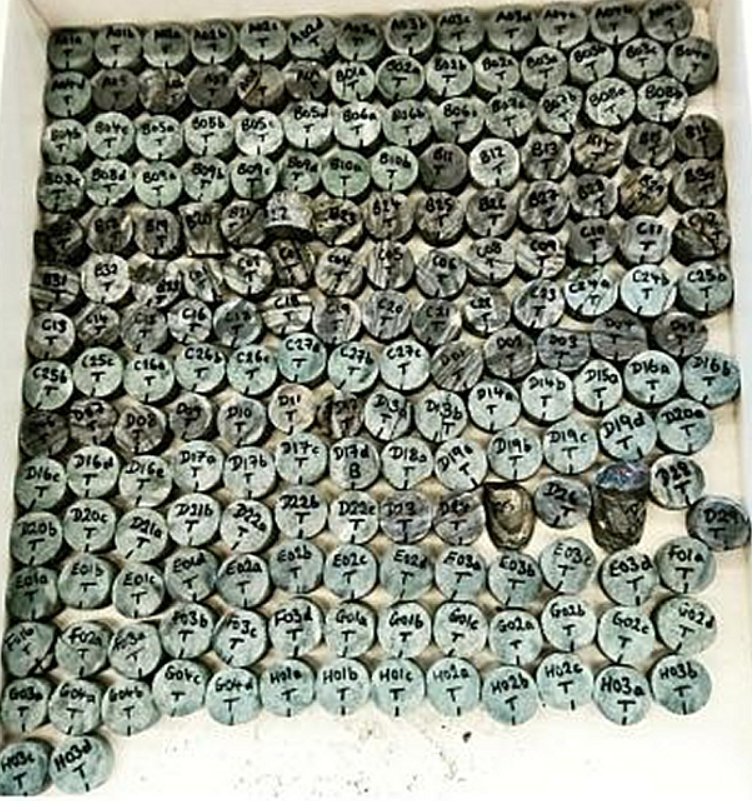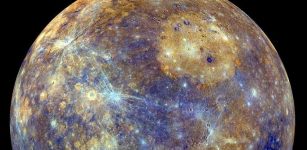Oldest Undisputed Evidence Of Earth’s Magnetic Field – Found
Eddie Gonzales Jr. – MessageToEagle.com – Recent groundbreaking research conducted by the University of Oxford and the Massachusetts Institute of Technology has yielded remarkable insights into the Earth’s ancient magnetic field.
Whole rock drill core samples from Isua, which were measured in the MIT Paleomagentism Laboratory to extract their ancient record of Earth’s magnetic field. Image credit: Claire Nichols.
The study successfully retrieved a 3.7 billion-year-old record of this field, revealing a striking resemblance to the magnetic field encompassing our planet today.
The existence of life on Earth is contingent upon the presence of its magnetic field, as it serves as a protective barrier against harmful cosmic radiation and charged particles emanating from the Sun, known as the ‘solar wind’.
However, until now, there has been no definitive determination of the precise time when the modern magnetic field was first established.
The researchers examined an archaic sequence of iron-containing rocks from Isua, Greenland. The iron particles function as tiny magnets, possessing the capability to record both the intensity and orientation of the magnetic field when the process of crystallization crystallization locks them in place (in their respective positions).
The researchers’ findings indicate that rocks dating back to 3.7 billion years ago preserved evidence of a magnetic field strength of at least 15 microteslas, which is comparable to the contemporary magnetic field strength of 30 microteslas.
An example of the 3.7 billion year old banded iron formation found in the north-eastern part of the Isua Supracrustal Belt. Image credit: Claire Nichols
The discovery undoubtedly holds significant implications for our understanding of the Earth’s ancient geomagnetic history and the potential presence of an early dynamo mechanism.
The findings constitute the earliest estimation of the Earth’s magnetic field intensity derived from whole rock samples, offering a more precise and dependable evaluation in comparison to preceding investigations that relied upon individual crystals.
The lead researcher, Professor Claire Nichols from the Department of Earth Sciences at the University of Oxford, stated that “extracting reliable records from rocks of such antiquity poses an immense challenge, and it was truly exhilarating to witness the emergence of primary magnetic signals as we analyzed these samples in the laboratory.
This development represents a significant step forward in our trying to determine the role played by the ancient magnetic field during the nascent stages of life on Earth.
While the magnetic field strength appears to have remained relatively constant, it is well-documented that the solar wind was significantly more potent in the past.
Claire Nichols (left) with co-author Ben Weiss (right) collecting samples for paleomagnetic analysis using a rock-coring drill. Image credit: Claire Nichols.
This observation suggests that the protection afforded to Earth’s surface from the solar wind has increased over time, which may have facilitated the migration of life from the oceans onto the continents, where it was no longer reliant on the shielding provided by the marine environment.
Earth’s magnetic field is generated by mixing molten iron in the fluid outer core, driven by buoyancy forces as the inner core solidifies, creating a dynamo. The solid inner core had not yet formed during Earth’s early formation, leaving open questions about how the early magnetic field was sustained.
These results suggest that the mechanism driving Earth’s early dynamo was similarly efficient to the solidification process that generates Earth’s magnetic field today.
Understanding the fluctuations in Earth’s magnetic field strength over time is crucial for ascertaining the inception of Earth’s inner, solid core formation. This knowledge will help to understand the rate at which heat escapes from Earth’s deep interior, a crucial factor in processes such as plate tectonics.
The rocks within the Earth’s crust frequently possess intricate and protracted geological histories, that erase any prior magnetic field data.
However, the Isua Supracrustal Belt exhibits a distinctive geology, situated atop a substantial continental crust that shields it from extensive tectonic activity and deformation. This unique geological setting has enabled researchers to assemble a compelling body of evidence substantiating the existence of a magnetic field dating back 3.7 billion years.
‘Northern Isua has the oldest known well-preserved rocks on Earth. Not only have they not been significantly heated since 3.7 billion years ago but they have also been scraped clean by the Greenland ice sheet,” study co-author Professor Benjamin Weiss (Massachusetts Institute of Technology), said in a press release.
The lossof the inert gas xenon from Earth’s atmosphere over 2.5 billion years ago remains an enigmatic phenomenon.
Recently, scientists have begun to explore the hypothesis that charged xenon particles were removed from the atmosphere by the magnetic field.
Written by Eddie Gonzales Jr. – MessageToEagle.com Staff Writer













